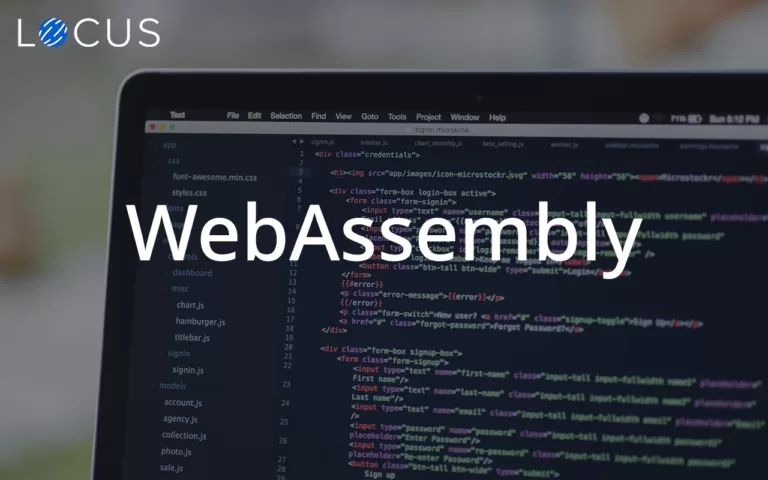Retail & CPG, Webinars
Reopening B2B Distribution and Fulfillment Operations in Southeast Asia: Locus-DHL Webinar Takeaways
Oct 20, 2020
5 mins read

COVID-19 has been a disastrous black swan event in the history of mankind — A global crisis that impacted countries, industries, travel, trade, commerce, day-to-day lives, and what not! Like many other parts of the world, Southeast Asia was hit hard by the pandemic, as businesses came to a standstill across ASEAN countries.
Vietnam, being a manufacturing nation, was one of the worst affected. Dealing with the ongoing pandemic is the new normal now, at least until a vaccine is developed. But, as businesses begin to slowly reopen, it is important to come back stronger, with improved core operations and resilient long-term strategies.
The Final Frontier: Designing an optimal cold chain network to distribute the COVID-19 Vaccine
To discuss the impact of COVID-19 on supply chains in Southeast Asia, and help businesses find a strategic roadmap to re-open b2b distribution and fulfillment operations in a post-pandemic world, Locus hosted a webinar in association with DHL, a global market leader in the international logistics industry. Krishna Khandelwal, Chief Business Officer, Locus, and Minh Tam Huynh, Head of Customer Service, DHL Vietnam, were the key speakers at the webinar.
COVID-19 Supply Chain Trends and Disruptions in Vietnam
Over the course of the pandemic, there have been massive demand and supply fluctuations in Southeast Asia, especially in Vietnam. A recent survey conducted by CEL Corporation states that 83% of companies in the physical value chain in Vietnam — retailers, shippers, traders, and producers, have been suffering from supply issues since the outbreak.
“Due to travel restrictions, companies have had to deal with a number of logistics bottlenecks. For instance, Samsung had to fly electronic parts from China to its factories in Vietnam, causing delays and higher operating costs. While that’s the supply side of the story, there have been massive shifts in demands too. Fueled by social distancing norms, people are restricting themselves from visiting stores, malls, and markets in person,” Krishna said.
The pandemic has also given a big boost to online shopping. A survey by Nielsen Vietnam revealed that people reduced their frequency of visits to supermarkets by 50% and to traditional and fresh food markets by more than 60%.
The demand for safe and convenient home delivery of goods has become more crucial than ever before. 25% of shoppers said that they have increased their online shopping and have reduced their out-of-home consumption occasions. At the same time, omnichannel sales are hitting an all-time high in Vietnam. Saigon Co.op, for instance, received over 20,000 orders through its online shopping service a fortnight after its omnichannel selling kicked off, more than 50% sales led by messaging apps like Zalo and Viber.
Download E-Book on “Omnichannel Retail Fulfillment and the Role of Logistics“
“This is indicative of the fact that moving forward, offering an omnichannel buying experience to customers will be essential for survival and growth for brands in the days to come. I am confident that these emerging trends in E-commerce and omnichannel selling will stay with us for a long long time, and businesses must plan their distribution operations accordingly, ” Krishna said.
Impact of B2C E-Commerce on B2B Distribution
“B2C and B2B are two inter-linked business lines that work parallely, yet go hand-in-hand. As B2C E-commerce goes up, and brands adopt Direct-to-Consumer fulfillment strategies, the demand for faster and more efficient B2B distribution has also risen,” Tam pointed out.
Business-to-Business distribution operations in Southeast Asia need to become more agile, demand-driven, and digital to drive customer satisfaction, revenue growth, and improve productivity.
While it has become crucial for B2C businesses to step up and introduce online and omnichannel shopping options for their customers, it is becoming essential for B2B distributors as well to adopt an effective omnichannel strategy in the days to come. Krishna and Tam further shared some key insights on how brands can go omnichannel successfully.
Post-Pandemic Sustainability: What lies ahead of the Supply Chain Industry. Download CaseStudy!
Also, in order to improve B2B distribution operations, it is high time for traditional distributors to let go of legacy systems and redundant processes to speed up on-ground operations and fulfill customer demands faster and more efficiently.
Digitization is the way forward for B2B fulfillment
“Lack of technology-driven processes and of technical understanding of delivery agents is pulling B2B distribution businesses from utilizing their capabilities to the fullest. Distributors can achieve great business benefits by adopting technology in their distribution operations — drive more productivity, achieve greater customer satisfaction, and stand out from competitors in the market,” Tam said, throwing light on the importance of tech in the traditional B2B distribution market.
Adoption of logistics technology such as automated route planning, fleet management, and real-time fleet tracking solutions can not only improve the speed and efficiency of on-ground operations, but solve a number of challenges that traditional distributors are currently facing.
- First Attempt Delivery Rate problems
- Meeting shipper’s business & operating constraints
- Adopting local & international standards & best practices
- Handling demand spikes
- Managing confidential data for multiple clients
- Lack of good tracking & reporting tools
- Inefficient operations / Low warehouse throughput
The webinar was an insightful session for business leaders in the supply chain to understand from experts on how to re-open b2b distribution and fulfillment operations in a post-pandemic world. With changing times, supply chain enterprises, especially B2B distributors in Vietnam and the rest of Southeast Asia must scale up their fulfillment operations, and implement the right amount of technology in logistics to optimize day-to-day planning and execution of on-ground operations.
Locus offers a range of AI-led logistics solutions to businesses in E-commerce and distribution operations. Get a quick tour of our solutions now.
Want to re-open B2B distribution and fulfillment operations? Request a demo Now!

Download E-book on Direct to Consumer- The trend of the future for Free!
Related Tags:

Tech and Product
Turbocharge your front end using WebAssembly
Authors: Vaibhav Aparimit & Arun Nalla JavaScript has evolved as the lingua franca for front end engineering. Having just one language for the front end is pretty dope as you develop once and run your code on any browser. Of course, you still need to test your web app on different browsers, but that’s okay […]
Read more
Tech and Product
How we built a zero-waste product roadmap in a Logistics SaaS Company
If you are a Product Manager (PM), it is highly likely that you dread the month before a new quarter begins. You, my friend, have to decide what your tech team will spend 25% of their year building. Your customer success team wants you to build that long-pending feature request raised by the customer, while […]
Read moreMOST POPULAR
EDITOR’S PICKS
SUBSCRIBE TO OUR NEWSLETTER
Stay up to date with the latest marketing, sales, and service tips and news


Reopening B2B Distribution and Fulfillment Operations in Southeast Asia: Locus-DHL Webinar Takeaways